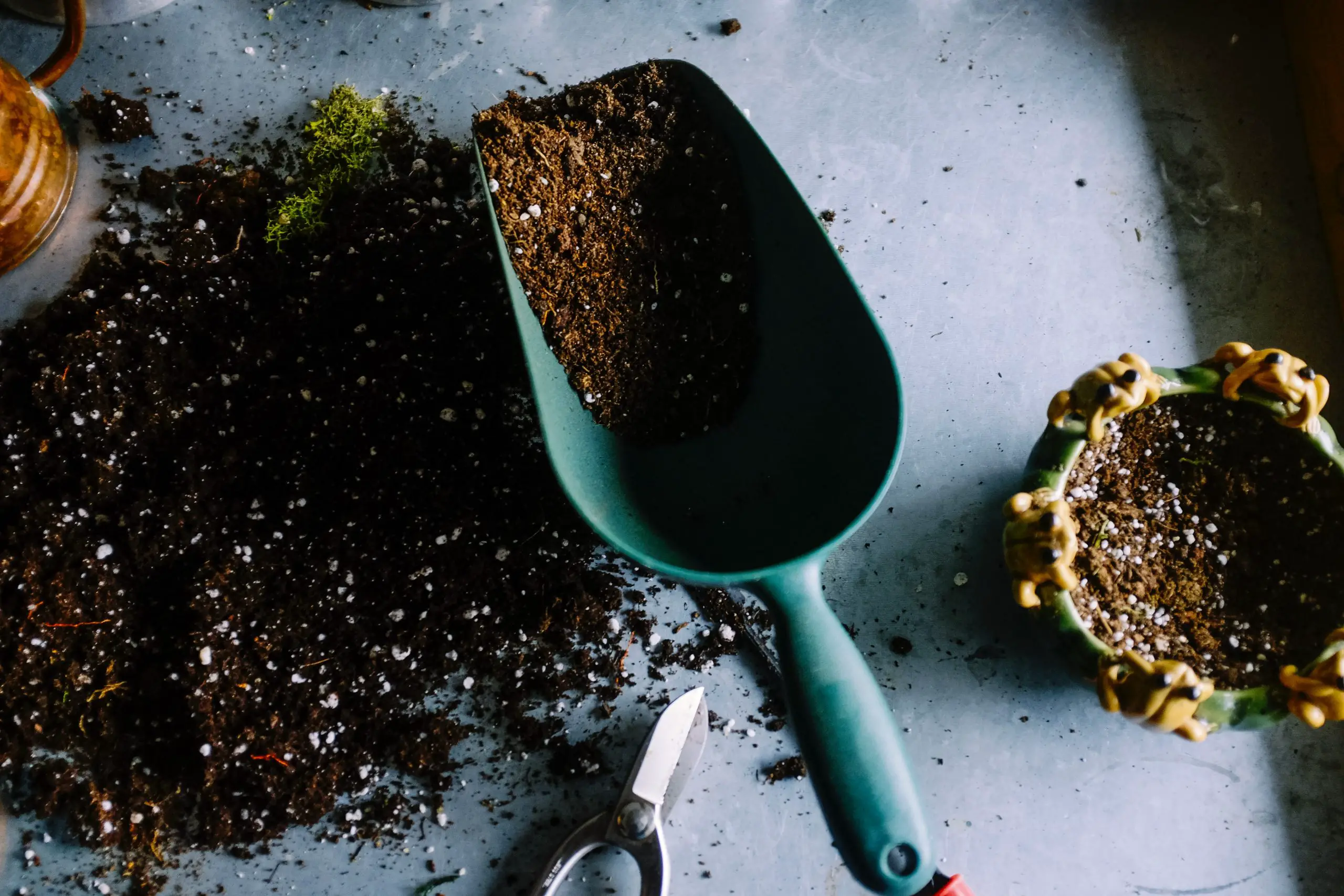Last Updated on April 10, 2024 by Real Men Sow
Pricking Out Your Seedlings
This is the process of taking out all seedlings that are growing together and transferring them to their own pots or plugs of potting mixture. As soon as your seedlings reach a size that is manageable, you can start pricking them.
Use a good quality all-purpose potter’s mix to fill your plug trays and pots. Gently lift the seedlings from the tray in which they were grown. Keep as much of the original potting mix around the roots as possible. You should only plant small quantities of seedlings to ensure that they don’t dry out before their roots become bare.
Use a pencil, your finger or another similar tool to poke holes in the potting mixture. Each seedling should be lifted carefully and never touch the stems. Gently press the seedling into the hole by carefully putting the roots down. If the seedlings seem a bit dragged and leggy, you can place some of the stem in a burying container. It will support them.
After you are done, water your seedlings using a watering can and a hose with a fine rose. Do not worry if your seedlings become a bit flattened. They will soon recover.
Plugs vs Pots Seedling Containers
Trays with smaller plugs suit most salad crops, especially if they will be transplanted promptly within three or four weeks of sowing. Larger plugs suit bigger, hungrier seedlings such as those of the brassica cabbage family. They’re also great for other vegetables that benefit from growing a little before planting, such as onions.
Larger seedlings, or those of tender crops like tomato or pepper that won’t be planted out until after the last frost, are best pricked out into individual pots. They grow fast and may need to be potted on once again before they are transplanted into their final growing positions.
Preparing Seedlings for Planting
To keep seedlings hydrated, water them regularly but don’t overwater. If you are growing in a tunnel, greenhouse, or cold frame, make sure to ventilate it during mild, sunny days. This will keep the air moving and reduce the chance of mold and disease.
Cool-season crops such as lettuce, onions and beets can be taken outside immediately after the soil reaches 50°F (10°C). In preparation for the move, you can encourage stronger seedlings by gently running your hands over the seedlings. If the weather is favorable, you can plant seedlings as soon as they are young. This could be as early as three to four week after sowing.
Seedlings that are younger tend to grow faster than those that have grown root bound in their pots. It’s a good idea to get them outdoors while they are still young. This will free up space under cover. Keep a few extras in your cover, just in case.
Hardening Off Plants
Tender plants require acclimatization before they can be planted out. For a brief time, place the plants in a protected area outside. Gradually increase the time plants spend outside over a few weeks, until they are staying out all day.
If you are unable to return your seedlings to their home during the day, there is another option: place them in a cold frame. Then open the vents gradually wider each day to increase ventilation. You must make sure they are completely shut down before it gets dark.
Transplanting Seedlings
Pre-prepared soil is soil that has been amended with well-rotted organic material such as compost. Lay the seedlings on the prepared soil and get the spacing correct by using a ruler or tape measure. However, with practice, you will be able to space them by eye.
How To Transplant Seedlings Easily
To make holes in the soil, you can use a trowel, a dibber or your fingers. Place each seedling in its hole and then press down around the root ball. You can plant Lankier seeds deeper, provided you don’t bury any of the lower leaves. To settle the soil around roots, water the area you just planted.
Before planting, it is important that root balls are at least half-dry. If they are not, soak the root balls in water for a few hours until they become completely soaked.
Protecting New Transplants
Covering new transplants with row covers or horticultural fleece at the beginning of the growing season can help. This helps seedlings to be protected from cold winds and low temperatures by trapping some of the sun’s heat. They are also protected from birds that love tender shoots. The covers should be secured so that they are snug against the plants. To prevent wind from getting under the covers, weigh them down. Then lift the cover off once the weather is warm enough to remove the covers. To prevent slugs or snails from eating your seedlings, you may have to place traps.

